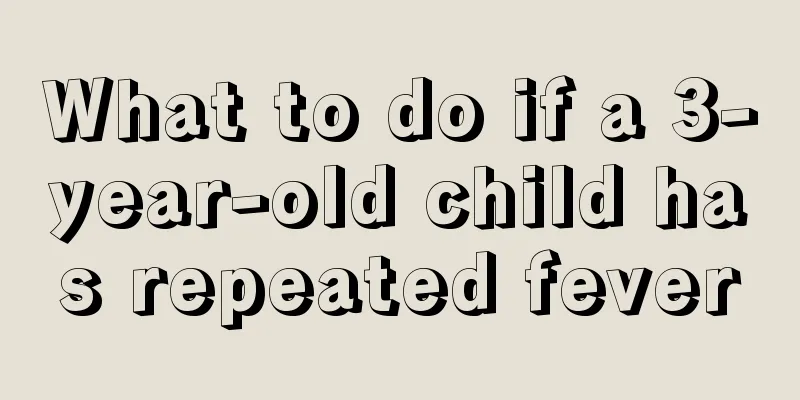How to deal with children's abrasions

|
Children are lively and active, and seem to have endless energy every day. They often bump into things while playing, and sometimes accidentally scratch their skin. At such times, parents should first treat the wound effectively to avoid infection. When a child gets scratched, parents should avoid being impatient or scolding the child. It is best to do some preventive work before the child plays. How to deal with children's abrasions and broken skin Home first aid measures: The most important treatment is to clean the wound surface, because embedded dirt may cause infection. Step 1: Rinse the wound with clean water (such as medical saline, purified water, distilled water, mineral water) to remove dirt on the skin surface. Step 2: You can use warm soapy water to clean the heavily contaminated skin around the wound. Step 3: After rinsing, apply complex iodine on the wound surface. Allow the wound to heal naturally in the air. Special tips: If the wound is large or still exudates after treatment, it needs to be simply bandaged with sterile or medical gauze. Of course, most abrasions will scab over without treatment, which is the best natural way to heal. It is not recommended to use Band-Aids in this situation. Stop bleeding For obvious bleeding after abrasion, wash your hands and press the wound tightly with sterilized gauze for 5 to 15 minutes. Cleaning the wound After stopping the bleeding, rinse the wound with clean water or saline. If conditions do not allow, use running tap water to wash away dirt on the surface of the wound. Disinfection and medication After cleaning the wound, use a cotton swab dipped in iodine (or iodine cotton swab) to disinfect it, then apply a breathable Band-Aid to prevent the wound from coming into contact with other dirt. If the wound is slightly red and swollen and you suspect it may be infected, you can apply some anti-inflammatory ointment on the wound. Severe abrasions requiring medical attention You should go to an emergency department if any of the following occur: 1. Bleeding occurs in a jet-like manner or cannot be stopped by pressure; 2. The abrasion is deep or the fat or muscle is exposed at the wound; 3. Dirt on the wound cannot be removed; 4. The wound does not heal for a long time or becomes red, swollen and painful. |
<<: When is the best time for children to supplement zinc?
>>: How to change the habit of children sucking their fingers
Recommend
Treatment of sleepwalking in children
In fact, it is important to cultivate good habits...
What are the symptoms of increased intracranial pressure in children?
Increased intracranial pressure in babies has a g...
What to do if your one-year-old baby has diarrhea
The body of a one-year-old baby is in the stage o...
What are the treatments for children with cerebral palsy?
Some children's diseases are congenital, whil...
My child always coughs in the morning
The physical health of children is an issue that ...
White spots on children
Many diseases begin to appear in childhood, and p...
What to do if a little girl has inverted nipples
The maturation of breasts is one of the important...
What should I do if my eleven-month-old baby has no teeth?
When a baby is just born, his teeth are not fully...
What are the consequences of precocious puberty in children?
Many children are diagnosed with precocious puber...
What should adolescent children eat to grow taller?
Children's development during puberty is most...
Baby coughs and smells bad in mouth
It is difficult to avoid children catching colds ...
Reasons and solutions for baby burping after drinking milk
We also know that newborns mainly rely on breastf...
What are the symptoms of cataracts in babies?
Cataracts are still a relatively common symptom, ...
Is there still hope for a cure for benign epilepsy in children?
Benign epilepsy in children is a common brain neu...
5-year-old child with strabismus
Many people have strabismus since childhood, and ...









